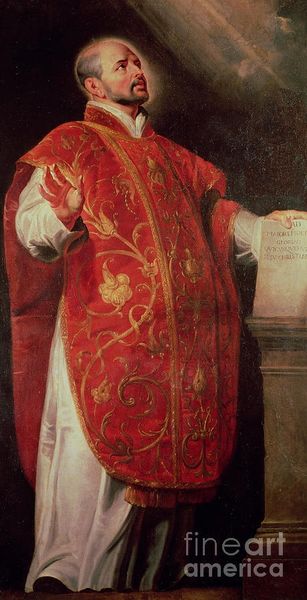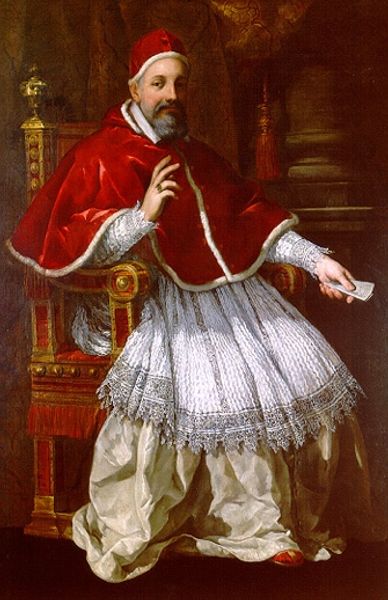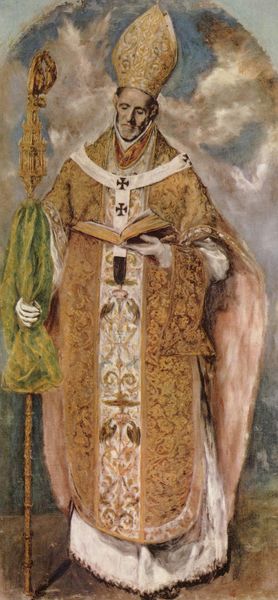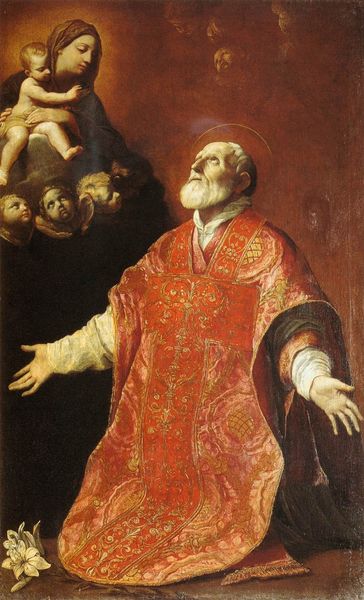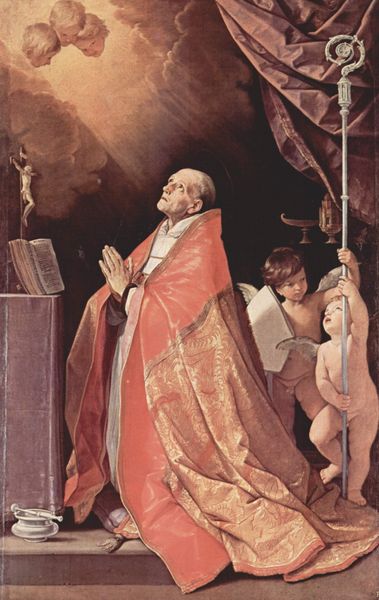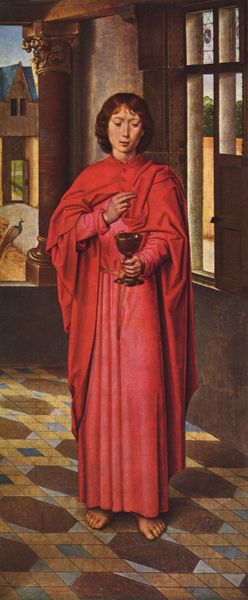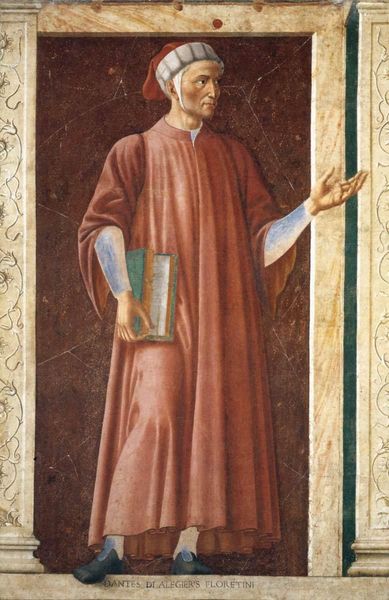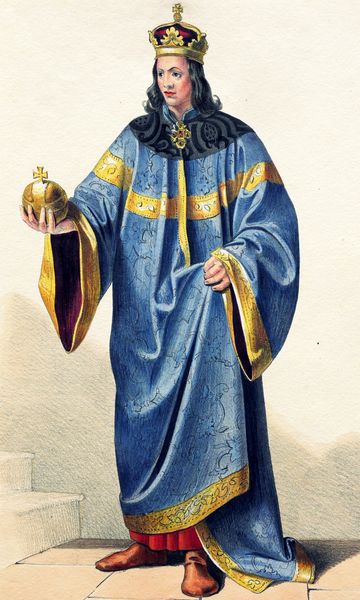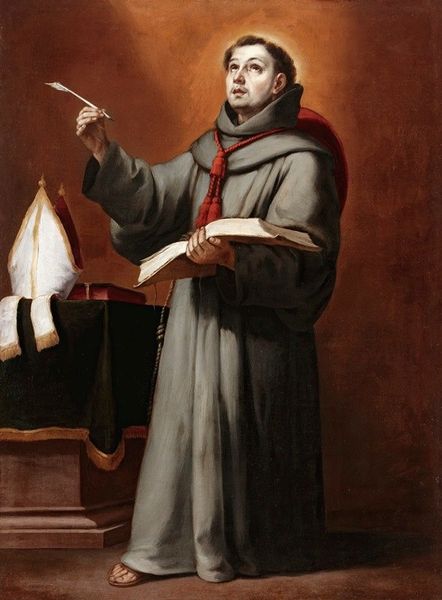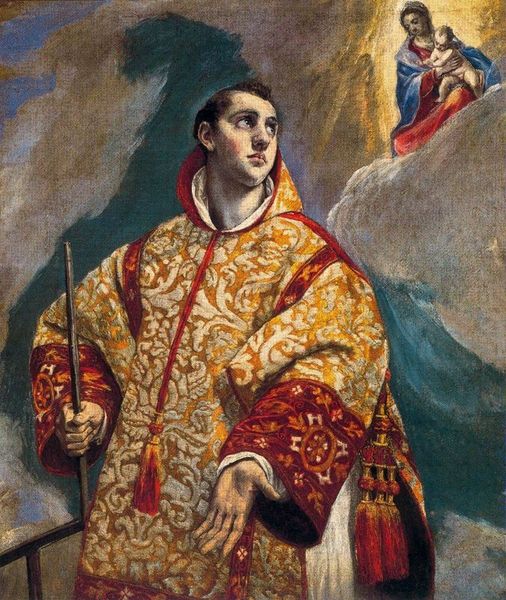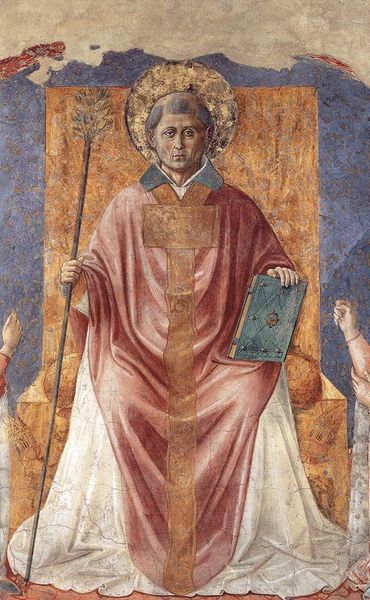
painting, oil-paint
#
portrait
#
baroque
#
painting
#
oil-paint
#
figuration
#
oil painting
#
christianity
#
history-painting
#
academic-art
#
portrait art
Copyright: Public domain
Curator: Here we have Bartolomé Estebán Murillo's "St. Rodriguez," created circa 1655 using oil paint. It's quite a compelling portrait, wouldn't you say? Editor: It's undeniably beautiful. I'm struck by the serene expression on the saint’s face, especially juxtaposed with the almost theatrical drama of the Baroque style. The contrasts—the red of his robes against the muted background, the angel hovering with the wreath, the palm—it feels very staged, doesn't it? Curator: Absolutely. Murillo was working during a period when the Catholic Church heavily influenced art, particularly in Spain. "St. Rodriguez," reflects Counter-Reformation ideals, emphasizing piety and divine intervention. You'll notice his upward gaze and the angel about to crown him—classic Baroque techniques to evoke spiritual awakening. Editor: And I wonder, what message does it send when religious figures are portrayed in this way? Does it truly inspire devotion, or does it reinforce a power structure where the divine seems distant, only accessible through intermediaries? The embellishments, while beautiful, also hint at opulence—a characteristic often at odds with the messages of humility typically attributed to saints. Curator: That's a valid point. One could argue the grandeur was meant to inspire awe and reinforce the Church's authority, visually representing its spiritual wealth. The placement of such artworks also mattered, they weren't simply decorative, they held specific roles in the visual culture of their time. Editor: Right. And it is important to note that artistic representation of religious figures carries so much baggage - even subtle artistic choices, like skin tones, or robe colours, can influence contemporary ideas about class, race, and gender in the spiritual realm. The symbolism is heavy, the subtext pervasive. I just wish it encouraged more conversation, more diverse viewpoints. Curator: A fair wish, indeed. Perhaps by grappling with these complexities, we might appreciate its artistry and engage with the intricate tapestry of the artwork and the complex power dynamics it represents. Editor: Exactly. It reminds me how deeply embedded art is within a matrix of social and historical forces. By pulling these narratives apart, we not only learn about the art, but ourselves.
Comments
No comments
Be the first to comment and join the conversation on the ultimate creative platform.
